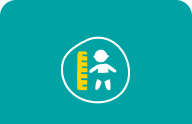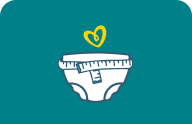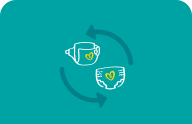Why Kegel Exercises Are Great During and After Pregnancy
You may have heard about Kegel exercises before. But what exactly are they, and how do they work? Kegel exercises are a great (and discreet) way to strengthen the pelvic floor muscles. These muscles support your bladder, uterus, and rectum. It's beneficial to practice Kegel exercises both during and after pregnancy. Read on to learn about the benefits of Kegel exercises and how you can add them to your daily routine.
What Is Kegel Exercise?
Kegel exercise is a form of pelvic floor exercise that involves squeezing and relaxing muscles in the pelvic and genital areas. These muscles support the pelvic organs, including the bladder, uterus, small intestine, and rectum. Though swimming, walking, and running while pregnant provide great overall workouts for pregnant people, Kegel exercises during pregnancy directly benefit labor and delivery. Regular Kegel exercises during pregnancy and after you’ve given birth can help improve and maintain your bladder and bowel control by increasing the strength, endurance, and correct function of these important muscles. Kegels can be beneficial throughout life, and you might want to begin doing them during pregnancy or after your baby is born, when pelvic floor muscles often need to be strengthened.
The good news is that you don’t need to join a gym to train these muscles. Kegels can be done discreetly as a part of your daily routine.
Pregnancy Weight Gain Calculator
Fill out your details:
Benefits of Kegel Exercises for Women
The benefits of doing Kegel exercises for women ⎯ especially during pregnancy and after giving birth ⎯ include:
Improved bladder control. Many people experience leaking urine during pregnancy or after having given birth. The risk increases with a vaginal delivery, as well as with having had a greater number of children. Kegels can help prevent or treat conditions like urinary incontinence ⎯ when you feel the strong urge to pee and pass urine before you can get to the bathroom, or stress incontinence, which involves leaking a few drops of urine when you cough, laugh, or sneeze.
Strengthening pelvic organ support. Vaginal childbirth is one potential cause of pelvic organ prolapse (when the uterus, urethra, and/or bowel sag down into the vagina). This is because pregnancy and vaginal childbirth can weaken the pelvic floor muscles, so they don’t provide enough support for the pelvic organs. As part of a treatment plan, doctors may recommend kegel exercises for pregnant women to help strengthen the pelvic floor muscles.
Reduced risk of fecal incontinence. This is a condition that causes you to leak stool before you make it to the bathroom. Kegels can help strengthen the rectal muscles to help prevent this.
Strengthening the pelvic floor muscles during pregnancy also helps you develop the ability to relax and control these muscles in preparation for labor and birth. In the postpartum period, Kegels can help heal perineal tissues, which are stretched during vaginal birth.
How to Do Kegel Exercises
Kegel exercises during pregnancy, or at any point, are simple to incorporate into your daily routine. It’s all about squeezing and relaxing the same muscles you would use to stop a stream of urine.Here’s how to do Kegels:
Find the right muscles. To do this, you can insert a clean finger into your vagina and squeeze the muscles you would use to hold in gas. If you feel a tightening around your finger, you’re doing it right. You can also imagine you are trying to stop passing gas or trying to stop the flow of urine to locate the right muscles. If you’re still unsure, your healthcare provider can help you locate the right muscles.
Get comfortable. At first, you may find it easiest to practice lying down. Later on, you’ll be able to do them lying down, standing, or even while sitting.
Squeeze the pelvic floor muscles, relax, and repeat. Here are a few different Kegel exercise routines to try:
Long hold: Squeeze your pelvic floor muscles and hold for several seconds.
Then relax for a few seconds and repeat.
Initially, you may only be able to hold for one or two seconds, but over a few weeks, you’ll gradually be able to increase the hold time by a second or two until you can hold for 10 seconds.
You can try doing this 10 times in a row, but if this is too hard, start with fewer repetitions.
As you practice, you might feel the contraction letting go, and that’s OK.
Just focus on retightening the muscles.
Over time, you’ll notice the contraction itself becoming stronger, too.
Contract and release.
Quickly tighten and relax the pelvic floor muscles several times in a row.
Hold for three, relax for three.
Hold the squeeze for three seconds, relax for three seconds, and repeat.
Increase the intensity as your muscles get stronger. It’s best to start small and gradually increase the number of repetitions, the duration of each squeeze, and the frequency of daily practice sessions as the muscles get stronger. Read more about when and how often to do Kegels in the next section.
As with all types of exercise, you will need to stick with Kegels and do them correctly to see the best results. Typically, individuals report noticing better bladder and bowel control after about 6 to 12 weeks. For continued results, make Kegels a permanent part of your daily routine.
When to Do Kegels and How Often
If you're pregnant or have just had a baby, it’s best to ask your provider before starting kegel exercises for pregnancy. During pregnancy, you may want to start in the second trimester when many pregnant people experience a much-needed energy boost. After your baby is born, you may be able to start doing Kegels within a few days of an uncomplicated vaginal birth⎯just make sure you feel ready. If you had complications during vaginal birth or had a c-section, wait until your healthcare provider gives you the all clear.
There is no set rule on how often to do Kegels. Some experts recommend doing Kegels at least twice a week, while others recommend doing them daily. There are many options in terms of how many Kegels to do and how often. For example, your healthcare provider may suggest doing 10 sets of Kegels three times per day; doing 50 squeezes throughout the day; or practicing twice a day before increasing to three times a day. With a little practice, you’ll be able to do them while you’re relaxing on the couch, waiting in line at the store, or even lying in bed. You can also contract your pelvic floor muscles before and during any situation where you might leak urine, such as when you sneeze or laugh.
Tips for Doing Kegel Exercise
To get the most out of doing your Kegels, keep these tips in mind:
Don’t do Kegels while peeing, as this may prevent your bladder from fully emptying.
Don't strain or hold your breath, and keep your abdominal, buttock, and thigh muscles relaxed.
Don’t overdo it. After starting to do these exercises, it can be normal to feel some soreness around the pelvic area, but if you feel pain, stop and talk to your doctor.
Doing these exercises regularly is important. If you find yourself forgetting, there are apps you can download that remind you to do your Kegels and guide you through different training sessions.
Some find contracting the pelvic floor impossible to start with, or they find it tricky to locate the right muscles. Your healthcare provider may recommend biofeedback training, which helps check which muscles are being contracted, or electrical stimulation, which uses painless electric currents to contract the correct muscles.
The Bottom Line
Kegels are your little secret ⎯ no one will ever know when you’re working hard on your pelvic floor muscles whether during pregnancy or any other time. It can also be great for your overall physical and mental health to do other forms of pregnancy exercise, like prenatal yoga. Staying active and fit is key to getting ready for parenthood. Every little bit of movement helps!
Join a World of Support
through Pregnancy and Parenthood.
TRACK WITH TOOLS
LEARN WITH EXPERTS
GET REWARDED












